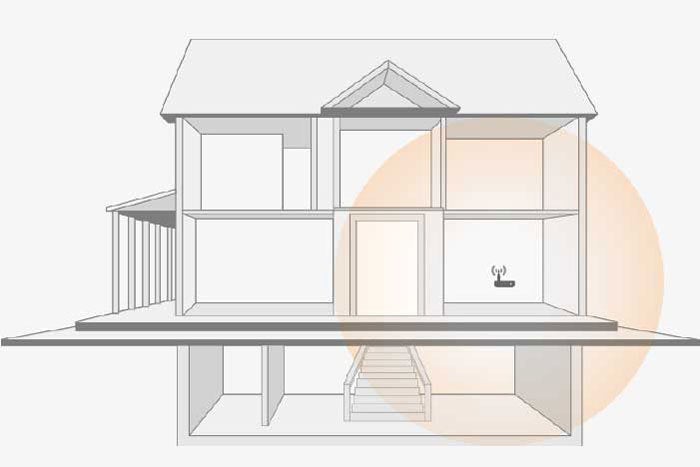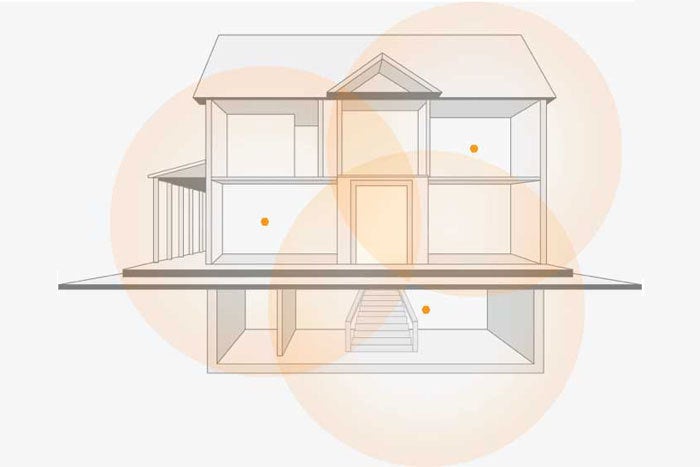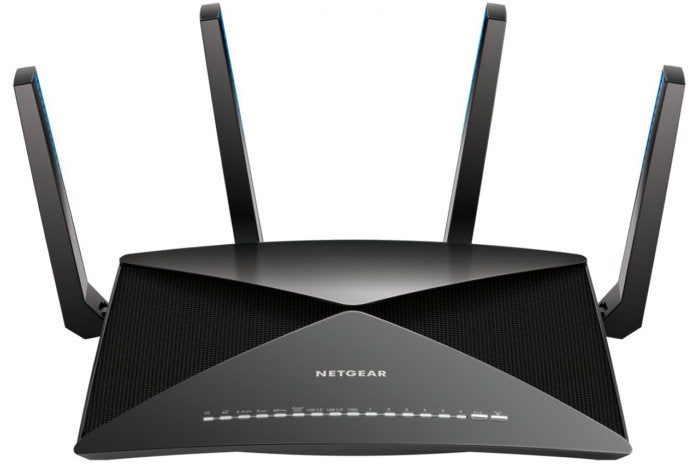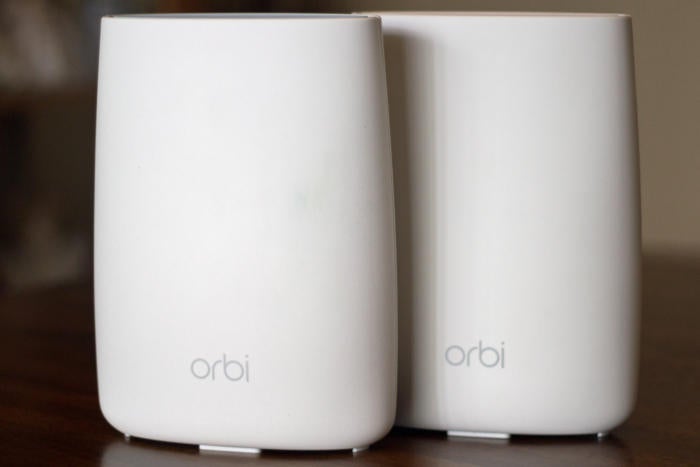
Available in your choice of three colors, Nest Wifi Points extend the range of Nest Wifi setups -- and they double as Google Assistant smart speakers, too.
Juan Garzon/CNET
Google on Tuesday announced the launch of the Nest Wifi, a refreshed version of the company's popular mesh router system, Google Wifi. Available for pre-order today and set to arrive November 4, the system is comprised of a Nest Wifi Router that plugs into your modem and separate Nest Wifi Points that wirelessly extend the reach of its signal -- and which themselves double as Google Assistant smart speakers.
A two-piece setup with the Nest Wifi Router and one Nest Wifi Point will cost $269. A three-piece setup with the Nest Wifi Router and two Nest Wifi Points will cost $349, and promises to cover homes of up to 3,800 square feet. That's enough coverage for 85% of homes in the US, Google says.
Mesh, meet Google Assistant
Beyond spreading a speedy internet signal throughout your home, the Nest Wifi promises to spread the voice-activated intelligence of Google Assistant around your house, too. That's because each of those Nest Points now doubles as a fully functional Google Assistant smart speaker, complete with always-listening microphones and touch controls on the top of the device.
The goal, Google says, is to get users to keep these things out in the open as opposed to hiding them out of sight, where they won't relay their signals as well. To that end, the new Nest Wifi Points also come in your choice of three colors (snow, sand or mist), and you can buy one on its own for $149. The Nest Router only comes in white, and costs $169 on its own.
You'll see an ambient glow from the light ring around the base of the Nest Point whenever it's sending audio to Google's cloud to come up with a response. When the mics are muted, the ring will glow orange.
James Martin/CNET
"We realized that performance for the Wifi Point would double if it was off the floor, not hidden in a closet," said Ben Brown, Google product lead for the Nest Wifi. "Having a great design, having something you actually want to interact with, and having the Assistant on the device makes it actually so it's a much better Wi-Fi system."
You can use a Nest Wifi Point just like you'd use one of Google's other smart speakers, like the Nest Mini, which also made its debut today. You get its attention by saying "OK Google," and then you give it a question or a command, including new Wi-Fi-specific commands like asking for a speed test or to pause Wi-Fi to specific devices or groups of devices. A ring of white light around the base of the device will glow whenever it hears you, and to let you know that it's connecting with Google's cloud to come up with a response. If you want to turn the mics off, just flip the mute switch in the back.
We haven't had a whole lot of time to give it a close listen for ourselves, but Google says that the sound quality in each Nest Point is stronger than you might expect. That's because the need for extra space inside the device for the antennas and for heat dispersion means that there's also plenty of room to push sound around via the downward firing speaker, Brown says.
As for the touch controls on the top face of each marshmallowy device, you can tap the center to pause or resume playback, or tap the sides to turn the volume up and down. Like with the new Nest Mini, a set of indicator lights will glow when your hand draws near to show you where to aim for those volume controls.
Faster than before -- but where's Wi-Fi 6?
That new Nest Router is an AC2200 model, which means that it supports current-gen Wi-Fi 5 connections with a maximum combined speed of about 2,200 Mbps across all bands -- up from about 1,200 Mbps last time around. Your actual speed will be a lot lower, since you can only connect to one band at a time, but like Google Wifi before, Nest Wifi will automatically "steer" you from band to band as you move about your house in order to keep your connection as swift and steady as possible.
Another upgrade: Nest Wifi now boasts four antennas for up to four simultaneous wireless connections (4x4). If you're using a client device like a MacBook Pro that can take advantage of those multiple antennas, then you'll be able to combine the speed of those simultaneous streams for a faster Wi-Fi experience.
You can spread Nest Wifi Points around your home to triangulate a better internet connection in every room. The previous version of the system is our top-rated mesh setup.
James Martin/CNET
All of the new hardware is also backwards compatible with first-gen Google Wifi setups, so you'll be able to add the new Nest Point extenders with their built-in speakers to your system if you've already bought in. And, if you decide to upgrade to the new Nest Router, your old Google WiFi access points will be able to connect to it and extend its signal, too.
As for the lack of support for next-gen Wi-Fi 6 features, Google suggests that it's still too early for the emerging standard in people's homes.
"It's really only 2022 by which point you're going to have a critical mass of [Wi-Fi 6] devices in the home, at which point Wi-Fi 6 will make sense in the home," said Sanjay Noronha, product lead for Nest Wifi. "And so, our philosophy is how do we make these products useful today?"
Google likely wants to keep its routers affordable, too. For reference, the Wi-Fi 6-ready version of Netgear Orbi, due out later this month, is slated to cost $700 for a two-pack with the router and a single satellite extender. Prices like that are out of reach for too many potential users, Noronha said.
Meanwhile, the newest Wi-Fi 5 version of Netgear Orbi costs $149 for a two-pack, and it supports built-in smart speaker functionality if you add in the $300 Orbi Voice extender with Alexa. Another competitor worth keeping an eye on: Amazon-owned Eero, which just released a new version of its Wi-Fi 5 mesh system as a $249 three-pack. That price is half the cost of the original, and an excellent indication that competition is heating up in the mesh category.
"We recognize that there's going to continue to be an evolution of technology, and we will continue to work on those evolutions," Brown said, "but we also want to make sure that we're delivering the best possible experience for everyone. And I think that we are very confident that this is what [Nest Wifi] represents today. And for the next, you know, five years, honestly."




 Luma Home, Inc.
Luma Home, Inc. Luma Home, Inc.
Luma Home, Inc.











